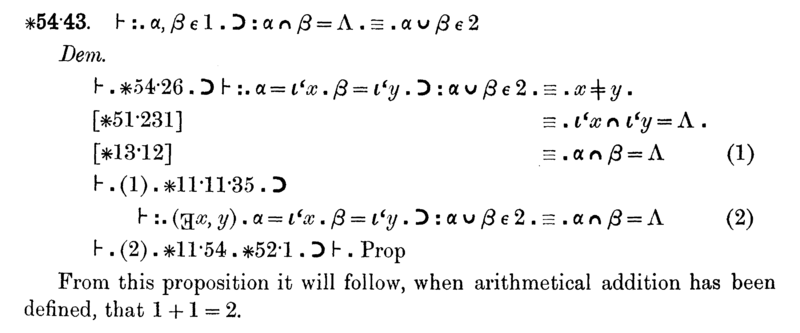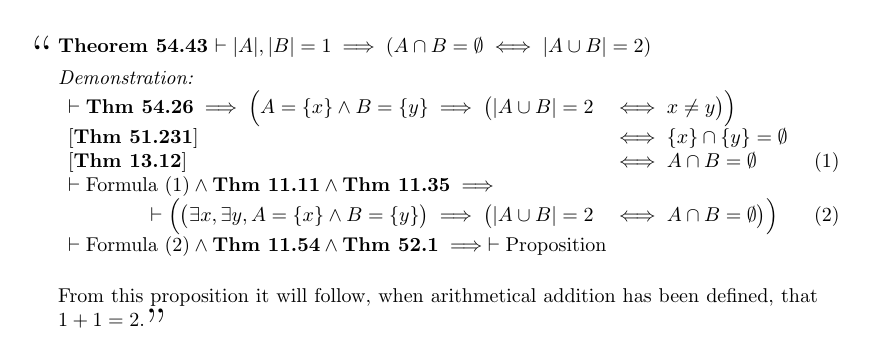Mark Dominus (陶敏修)
mjd@pobox.com

Archive:
| 2025: | JFMAMJ |
| JAS | |
| 2024: | JFMAMJ |
| JASOND | |
| 2023: | JFMAMJ |
| JASOND | |
| 2022: | JFMAMJ |
| JASOND | |
| 2021: | JFMAMJ |
| JASOND | |
| 2020: | JFMAMJ |
| JASOND | |
| 2019: | JFMAMJ |
| JASOND | |
| 2018: | JFMAMJ |
| JASOND | |
| 2017: | JFMAMJ |
| JASOND | |
| 2016: | JFMAMJ |
| JASOND | |
| 2015: | JFMAMJ |
| JASOND | |
| 2014: | JFMAMJ |
| JASOND | |
| 2013: | JFMAMJ |
| JASOND | |
| 2012: | JFMAMJ |
| JASOND | |
| 2011: | JFMAMJ |
| JASOND | |
| 2010: | JFMAMJ |
| JASOND | |
| 2009: | JFMAMJ |
| JASOND | |
| 2008: | JFMAMJ |
| JASOND | |
| 2007: | JFMAMJ |
| JASOND | |
| 2006: | JFMAMJ |
| JASOND | |
| 2005: | OND |
Subtopics:
| Mathematics | 245 |
| Programming | 99 |
| Language | 95 |
| Miscellaneous | 75 |
| Book | 50 |
| Tech | 49 |
| Etymology | 35 |
| Haskell | 33 |
| Oops | 30 |
| Unix | 27 |
| Cosmic Call | 25 |
| Math SE | 25 |
| Law | 22 |
| Physics | 21 |
| Perl | 17 |
| Biology | 16 |
| Brain | 15 |
| Calendar | 15 |
| Food | 15 |
Comments disabled
Tue, 07 Nov 2017
A modern translation of the 1+1=2 lemma

W. Ethan Duckworth of the Department of Mathematics and Statistics at Loyola University translated this into modern notation and has kindly given me permission to publish it here:

I think it is interesting and instructive to compare the two versions. One thing to notice is that there is no perfect translation. As when translating between two natural languages (German and English, say), the meaning cannot be preserved exactly. Whitehead and Russell's language is different from the modern language not only because the notation is different but because the underlying concepts are different. To really get what Principia Mathematica is saying you have to immerse yourself in the Principia Mathematica model of the world.
The best example of this here is the symbol “1”. In the modern translation, this means the number 1. But at this point in Principia Mathematica, the number 1 has not yet been defined, and to use it here would be circular, because proposition ∗54.43 is an important step on the way to defining it. In Principia Mathematica, the symbol “1” represents the class of all sets that contain exactly one element.[1] Following the definition of ∗52.01, in modern notation we would write something like:
$$1 \equiv_{\text{def}} \{x \mid \exists y . x = \{ y \} \}$$
But in many modern universes, that of ZF set theory in particular, there is no such object.[2] The situation in ZF is even worse: the purported definition is meaningless, because the comprehension is unrestricted.
The Principia Mathematica notation for !!|A|!!, the cardinality of set !!A!!, is !!Nc\,‘A!!, but again this is only an approximate translation. The meaning of !!Nc\,‘A!! is something close to
the unique class !!C!! such that !!x\in C!! if and only if there exists a one-to-one relation between !!A!! and !!x!!.
(So for example one might assert that !!Nc\,‘\Lambda = 0!!, and in fact this is precisely what proposition ∗101.1 does assert.) Even this doesn't quite capture the Principia Mathematica meaning, since the modern conception of a relation is that it is a special kind of set, but in Principia Mathematica relations and sets are different sorts of things. (We would also use a one-to-one function, but here there is no additional mismatch between the modern concept and the Principia Mathematica one.)
It is important, when reading old mathematics, to try to understand in modern terms what is being talked about. But it is also dangerous to forget that the ideas themselves are different, not just the language.[3] I extract a lot of value from switching back and forth between different historical views, and comparing them. Some of this value is purely historiological. But some is directly mathematical: looking at the same concepts from a different viewpoint sometimes illuminates aspects I didn't fully appreciate. And the different viewpoint I acquire is one that most other people won't have.
One of my current low-priority projects is reading W. Burnside's important 1897 book Theory of Groups of Finite Order. The value of this, for me, is not so much the group-theoretic content, but in seeing how ideas about groups have evolved. I hope to write more about this topic at some point.
[1] Actually the situation in Principia Mathematica is more complicated. There is a different class 1 defined at each type. But the point still stands.
[2] In ZF, if !!1!! were to exist as defined above, the set !!\{1\}!! would exist also, and we would have !!\{1\} \in 1!! which would contradict the axiom of foundation.
[3] This was a recurring topic of study for Imre Lakatos, most famously in his little book Proofs and Refutations. Also important is his article “Cauchy and the continuum: the significance of nonstandard analysis for the history and philosophy of mathematics.” Math. Intelligencer 1 (1978), #3, p.151–161, which I discussed here earlier, and which you can read in its entireity by paying the excellent people at Elsevier the nominal and reasonable—nay, trivial—sum of only US$39.95.
[Other articles in category /math] permanent link



